Search Images
Browse Content (p. 301)
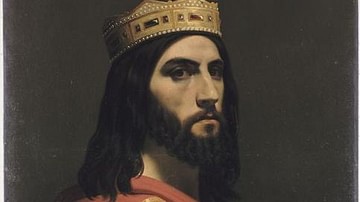
Image
Dagobert I
An imagined portrait of the Merovingian king Dagobert I (r. 623-639). oil on canvas by Émile Signol, part of the "Portraits of the Kings of France" series commissioned in 1837 by King Louis-Philippe (r. 1830-1848), 1842. Palace of Versailles...

Image
Death of Dagobert I
King Dagobert I (r. 623-639) on his deathbed, illustration from the Chronique des empereurs, 15th century.
Bibliothèque de l'Arsenal, Paris.
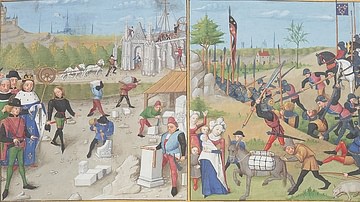
Image
Construction of St Denis Basilica and the Campaign Against the Gascons
Two depictions of crucial events in the reign of the Merovingian King Dagobert I (r. 623-639): to the left, Dagobert observes the construction of the abbey of Saint Denis Basilica in Paris; on the right, the Frankish army campaigns against...
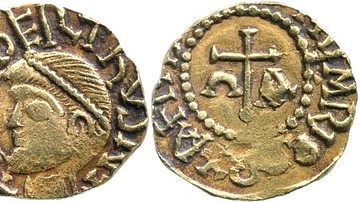
Image
Dagobert I Coin
Depiction of King Dagobert I (r. 623-639) on a contemporary coin.
National Library of France, Paris.
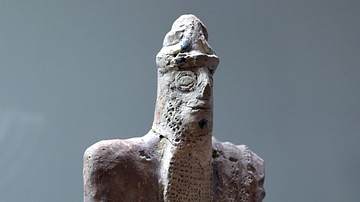
Image
Enlil
Baked clay statue of the Mesopotamian god Enlil, from the Scribal Quarter at Nippur, Iraq, 1800-1600 BCE.
Iraq Museum, Baghdad.
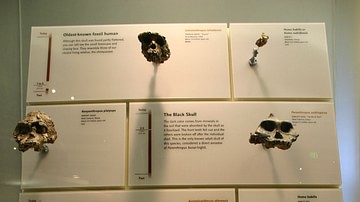
Image
Hominin Skulls
Wall of hominin skulls on display in the David H. Koch Hall of Human Origins at the Smithsonian Natural History Museum. They were all found in Africa. Left to right, from the top: Sahelanthropus tchadensis, Homo habilis or Homo rudolfensis...
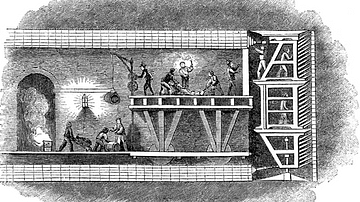
Image
Tunnelling Shield
An illustration of the tunnelling shield designed by Marc Isambard Brunel (1769-1849). The shield was used during the construction of the Thames Tunnel, completed in 1843. The shield allowed workers to excavate but be protected from cave-ins...
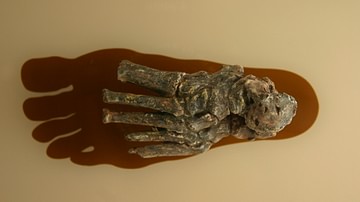
Image
Homo Habilis Foot with Crocodile Bite Marks
Foot of a Homo habilis individual designated OH 8, found at Olduvai Gorge in Tanzania by Louis and Mary Leakey, probably dating to around 1.8 million years ago. The bones show extensive damage caused by a crocodile – in fact, the whole foot...
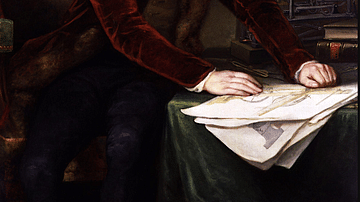
Image
Marc Isambard Brunel
An 1813 portrait by James Northcote of the engineer and inventor Marc Isambard Brunel (1769-1849), most famous for the Thames Tunnel, completed in 1843. (National Portrait Gallery, London)
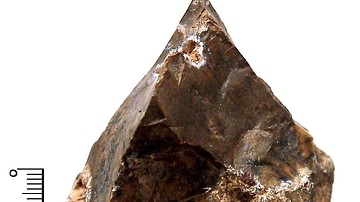
Image
Oldowan Industry Chopper
Stone tool chopper belonging to the Oldowan tool industry (c. 2.6-1 million years ago). Oldowan tools overlap in terms of time with Homo habilis, Homo rudolfensis, and Homo erectus, as well as with later Australopithecines, and it is possible...